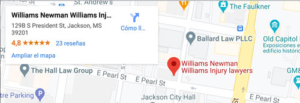Seat Belts Prevent or Lower the Severity of Liver Injuries
Emergency rooms in Mississippi and around the country treat about 2 million car accident victims each year, and many of these road users are admitted because of blunt force abdominal trauma. Two of the organs most commonly damaged in automobile accidents are the liver and spleen. However, wearing a seat belt reduces the risks of suffering such an injury by more than 20 percent, according to a study in the Journal of Epidemiology and Community Health that was recently published.
The safety benefits of seat belt use are well established, but a team of researchers from New York University and the University of Kansas Medical Center wanted to find out how effective they are at preventing serious liver injuries. After studying patient admissions collected by the National Trauma Data Bank between 2010 and 2015, the researchers identified 51,202 motor vehicle accident cases that involved varying degrees of abdominal trauma.
An analysis of these cases revealed that seat belts reduced the likelihood of someone suffering an abdominal injury in a car crash and significantly lessened the severity of the injuries that were sustained. Seat belts alone reduce the chances of suffering a liver injury by 21 percent, according to the study, and seat belts combined with airbags make such injuries 26 percent less likely to occur.
Seat belt use is often a contentious topic in car accident lawsuits because plaintiffs who did not do all that they could to avoid injury may be awarded lower damages. Experienced personal injury attorneys may expect reckless motorists or their insurance companies to make arguments based on the legal doctrine of comparative negligence, and they could take steps to refute these claims. Lawyers could have the vehicles their clients were driving inspected to establish that their safety systems were in good working order, and they may consult with medical experts to find out how badly their clients would have been injured if they had been properly restrained.
















